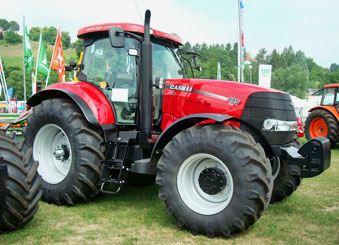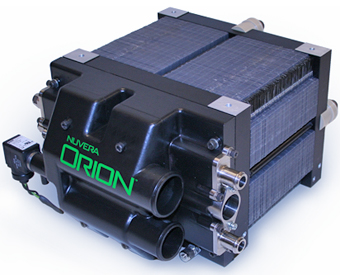Of course, you don't want the system to be running all the time - a 10lb bottle will last you less than a minute, if it's open. Typically, you want the system triggered on while you're at the track, at WOT (wide open throttle), and at relatively high rpm's (see "Safety" for why). To make that happen, you'll typically want to wire, in sequence, several switches. I won't describe the specific wiring here, but you'll have some or all of the following:
What Can Go Wrong?
Well, a lot can go wrong, but hopefully you'll have adequate safety mechanisms built in to protect your motor when it does. The main thing that can go wrong is adding nitrous into your engine without compensating fuel. This extreme lean condition is disaster for the engine, and you're not likely to get a second chance - at least with the same engine. Conversely, adding extra fuel without nitrous is not particularly bad for the engine, so you can imagine, it's safer to start with the car running rich (too much fuel), then lean it back from there. Some examples of problems you might encounter include:
| Fuel pump fails | A failed pump will lose pressure immediately, causing an extreme lean condition |
| Fuel injector failure or lockup | Using stock fuel injectors with a dry nitrous kit can cause the injectors to lock up and not flow fuel |
| Solenoid failure | A failed fuel or nitrous solenoid can cause serious damage |
Ignition RPM limiter
On a stock LT1 or LS1 computer, the rev limiter is implemented by cutting the signal to the fuel injectors so the cylinders have no combustion. If you're running a dry system, which depends on the fuel injectors to provide compensating fuel for the nitrous, losing fuel this way is the ultimate disaster. An aftermarket ignition will typically implement the rev limit by cutting off spark rather than fuel, which is a much safer implementation of the rev limit. Typically, you'd get your stock PCM programmed to set the rev limit up higher than you'll ever expect to go (like 7000RPM), and use the setting on the aftermarket ignition as your actual rev limit.
Window Switch
This electrical device provides an open or closed circuit based on the engine being between two RPM values (hence "window") that you chose, so that you'll only flow nitrous in this range. Why would you do that? Well, for two very different reasons.
At low RPM, think about what's going on: you're spraying nitrous into the intake at a constant flow. That is, the nitrous bottle and solenoids have no idea what RPM you're at, and they're just pushing it into the intake at a constant volume. Inside the engine, though, the nitrous and fuel combination is being sucked into the cylinders during every stroke. The net result is that at low RPM, you're getting far more of the mixture into the cylinders. At 3000 RPM, for example, you're getting twice the amount as at 6000 RPM. So, you can imagine that running nitrous at, say 1000 RPM, is far more stressful on the motor as at 3000 RPM, and typically causes a "nitrous backfire" - meaning that the nitrous/fuel combination can explode in the intake manifold (rather than the cylinders) - a bad thing. So that's why you don't want the system triggered at low RPM.
At high RPM, the situation is easier to explain. Given the discussion of the rev limit above, you may just want the nitrous system to cut off before hitting that rev limit. If you've got a stock LT1 or LS1 ignition, you certainly want a window switch. If your rev limit is implemented by an aftermarket ignition, it's perfectly safe for the motor to run nitrous during the rev limit. It's not particularly easy though, on your transmission or clutch to have all that power during the shift, which may be a reason to keep the window switch set a bit before you shift.
Fuel Pressure Safety Switch (FPSS)
This is a device that's plumbed into the fuel system, and provides an open or closed circuit based on availability of fuel pressure. It can be used in the triggering circuit to make sure the system isn't on when you've got a fuel problem. Typically, you only use it to switch off the nitrous solenoid; turning off the fuel solenoid as well can start a cycle of switching the solenoids on and off while the pressure raises and drops in the fuel system when you're switching the solenoid on and off. Let the pressure build up in the fuel lines when you open that solenoid, and when it's high enough, the nitrous solenoid will open. The switch can be used whether you've got a wet or a dry system. You can adjust the pressure at which it triggers by using an allen wrench on the back of the switch (loosen the screw lowers the pressure threshold).
You want to set the pressure on the FPSS, such that if the pressure drops about 10psi the nitrous system will shut off. On a wet LT1 system, this will be around 33psi, and on a dry system I'd leave the switch just above stock, say 45psi.
To set the threshold pressure, you've got a few options"
Connect enough plumbing so that you can have the FPSS installed at the same time as a fuel pressure gauge. Turn the key on to pressurize the fuel system, then turn it off. As the fuel pressure bleeds down, monitor the continuity across the FPSS contacts (disconnect them from the rest of the nitrous system) and when the pressure reaches the level you're interested in, adjust the screw on the back so it just balances back and forth between the continuity signal.
You could use an air compressor, with the appropriate fitting for the FPSS. Remove the FPSS from the car, and thread it onto the compressor. Set the compressor for the pressure of interest, and measure continuity as above.
If you can't do option #1 above because you don't have two available ports, first thread in the pressure gauge, and cycle the key. Then time how long it takes for the pressure to bleed down to the correct level. Then disconnect the pressure gauge, install the FPSS, and do the process against the clock rather than the pressure.
Timing Retard
A nitrous/fuel mixture increases the burn rate in the cylinder, and typically adding a few degrees of timing retard is recommended for safety. A rule of thumb is two degrees per 50hp of nitrous, but this will also reduce the power generated. When I tune my system, I monitor engine knock, and retard the timing only enough to eliminate the knock, which is usually about one degree per 50hp. At the track, under harder conditions (actually pulling the weight of the car, possibly higher outdoor temperatures, etc) I'll add a degree of retard.
The LT4 Knock Module is a common modification to 4th generation f-bodies. This device dulls the sensitivity of the knock sensor readings, which allows the PCM to avoid seeing noises from headers, exhaust and loud valvetrain parts incorrectly as knock. The net result is that the overall timing of the engine is advanced a bit, and the PCM is a bit less sensitive to all knock, whether real or false. Unfortunately, knock when running nitrous has more of a chance of doing damage, and it's not at all clear that using a LT4 KM while running nitrous would be a good thing. Personally, since I tune my nitrous while watching knock, and retard my timing as well, I do use the LT4 KM. Once again, though, it's your call on all these safety issues.
High Octane Fuel
High octane gas (e.g. 100 or more, unleaded) will also slow the burn rate in the cylinder. This will provide another way, similar to retarding timing, to avoid knock. I only use nitrous on a 50/50 mix of 92 octane pump gas and 100 octane racing gas. Make sure it's unleaded, of course, or you'll destroy your O2 sensors.
By the way, watch out for Octane Boost claims. Typical claims are "8-10 points of octane boost for a tank of gas." You should be aware that these "points" are tenths of a point of octane as you'd purchase at a gas station. So the above example will raise your octane from 92 to 92.8 or 93, not 100-102 as you might think.
Don't assume that if high octane fuel helps on nitrous motors, that it'll help your naturally aspirated motor too. A naturally aspirated motor is tuned for a particular octane of gas; adding more doesn't help one bit. Save your money.
Nitrous Filter
A simple part, but essential in any nitrous system. This filter is added in-line to your nitrous line, between the tank and the solenoid. Install it as close to the solenoid end as is convenient. It will trap any small particles that may come through the line, much like a fuel filter. A common solenoid failure is due to some particle jamming it open.
Fuel Systems
Your fuel system is the most important part of the system. As I hope is clear by now, the worst scenario in a nitrous system is a lean air/fuel mixture. The solutions to a good fuel system depend on the type of nitrous system you're using.
On a wet system, you simply need to ensure that your fuel system can supply adequate fuel, at standard (~45psi at WOT) pressure. A stock f-body fuel pump can usually supply enough fuel for around 450 total horsepower to the motor; any more and you want to get a larger pump. Much more than 650hp and you'll want larger fuel lines as well.
On a dry system, not only do you want adequate fuel like the wet system, but on an LT1 setup the fuel is added by raising the fuel pressure, which forces more gas through the injectors. In this scenario, it's typically recommended that you replace the stock fuel injectors with better quality (not higher rating, just better, like Bosch) injectors. These injectors are able to handle the increased fuel pressures necessary.
Spark Plugs
Generally you want to use copper spark plugs as opposed to the stock platinum ones. You also want to reduce the gap from the stock 0.050" down to 0.035"-0.040". I've received a couple notes on why you use a smaller gap. "The reason you want a smaller gap is because of ionization. If you change from the typical air (78%nitrogen, 21% oxygen)/fuel ratio, a given gap requires more energy to ionize the mixture, resulting in less energy in the spark, if you even get a spark. You could also increase the coil voltage instead of decreasing the gap, but I think using a smaller gap would be preferential since the spark time will be smaller." and also this message: "The reason that you will close the gap on your spark plugs is because when nitrous is added, it raises the cylinder pressure, much like a supercharger. Therefore "blowing" the spark out. When you close the gap it cannot put out the spark as easily."
Testing Solenoids
I mentioned failed fuel or nitrous solenoids doing damage. Some of the issues here may be hard to cover with only other safety devices. I recommend you wire your solenoids with spade clips, so you can easily disconnect them, and test them on a regular basis. Simply disconnect them from the rest of the wiring, then ground one side, and connect the other side to 12V, and listen for the click-click to make sure they open and close. Some folks will also use two nitrous solenoids, in-line, which will ensure that both would have to fail before the flow would fail to stop. Of course you still need to test this setup, to ensure one isn't stuck open.
Tuning
All of the kit systems will come with a couple tuning setups, labeled "50-shot", "100-shot", etc. These are tuned to provide 50, 100, or other horsepower amounts, usually measured at the crank (i.e., measured on a chassis dyno you'll get a bit less). I consider these a starting point, and certainly good for your first passes (hopefully you'll make these with the lowest power, until you tune the system up). Once you've got the system installed and functional, though, tuning it is paramount, before running any serious power through it. I really recommend you do this tuning right away, even though the temptation will be strong to just go out and enjoy the power. This is the time you're very likely to do some serious damage to the motor, so it's important to get it set up right.
The Mechanism
Collateral Damage
You can break tons of other parts on your car by running nitrous, or any other large power adder. Running slicks at the track will just accelerate the damage. Here are a few things to keep in mind.
Clutch
The huge torque spike at low rpm's is particularly hard on clutches. I had to buy a new clutch as soon as I made my first pass with nitrous on slicks. Keep in mind, on a manual transmission car, you're likely to need one too.
Rear End
Not unique to nitrous, but certainly a common failure on high horsepower cars, is the rear end. A 4th generation f-body, with a stock 10-bolt rear end, is not going to last long on nitrous. Plan for an expensive (~$2,000) upgrade at some point.
Tires
With all the extra power, you'll have trouble hooking up with any traction, especially on street tires. You'll probably have to use drag radials at least, or slicks if you're adding any significant power.




.jpg)

